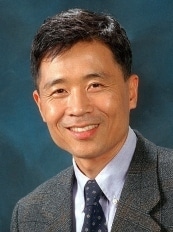Apr 22 2016
Malicious Mr. Hyde and mild-mannered Dr. Jekyll were opposite characters of the same man, and their story had a tragic end as they were struggling to coexist peacefully.
 Chang-Beom Eom (Image credit: University of Wisconsin–Madison)
Chang-Beom Eom (Image credit: University of Wisconsin–Madison)
Most materials possess the ability of being only one thing at a time. A team of researchers from the University of Wisconsin–Madison have produced a totally new material, where entirely contradictory properties can coexist.
The material is a polar metal, and the researchers have described it in the April 20 issue of the Nature journal.
“Polar metals should not be possible,” says Chang-Beom Eom, the professor of materials science and engineering who led the research.
Going against the laws of the universe, Eom and his team developed a compound material that is a scientific oxymoron. They created a crystal with a variety of personalities - part metallic, part polar – using a novel synthesis process aided by computational modeling.
Metals are good conductors of electricity as electrons flow without restraint throughout them. In contrast, polar materials restrict the free flow of electrons and operate as electrical insulators.
Eom’s team aimed to develop a material that can display both conducting and insulating properties. First, they divided the metallic and polar parts of the crystal. Certain electrons generated the metallic nature, traveling inside the material to conduct electricity. Other electrons generated the polar properties.
However, as the material’s natural molecular structure is symmetrical even after dividing the two parts, the entire material does not act polar. The electrons were arranged equal and opposite, thereby canceling each other out.
To overcome this hurdle, the researchers synthesized the substance with slightly unconventional atoms, which slightly altered the internal symmetry enough to make the material polar.
The initial calculations that the theory suggested did not show the polar nature so we experimentally tested the materials, then went back and improved the models. We looped between theory and experiments, but most importantly, we actually created the material, demonstrated its polar and metallic properties, and developed an understanding of how this is happening.
Chang-Beom Eom, Professor of Materials Science and Engineering, University of Wisconsin-Madison
By growing thin films of material atom by atom, Eom and his team produced the polar metal. Importantly, they grew it on top of a supporting lattice containing a mildly offset molecular organization.
Tightly clamping the growing film to this support distorted the internal arrangement of their material, stabilizing its internal geometry in the asymmetrical orientation, essential to maintaining polarity.
The team required immense amount of patience and accuracy to synthesize and characterize this novel material. The researchers counted every atom grown on the surface, as the substance gradually grew by layer by layer. They then used many complex optical, electronic and structural measurements to establish its properties.
Their method is an effort to speed up the discovery of multifunctional materials with rare coexisting properties, allowing devices to possess the ability to carry out optical, electrical, and magnetic functions in real time.
This has been a complex effort, and theoretical and experimental contributions from all collaboration members has been essential. The project would not succeed otherwise.
Chang-Beom Eom, Professor of Materials Science and Engineering, University of Wisconsin-Madison
This research was supported by the U.S. Department of Energy Office of Basic Energy Sciences, the National Science Foundation under the Designed Materials to Revolutionize and Engineer our Future program, and the Army Research Office.
Eom’s team combines experimentalists and theorists, including UW–Madison physics Professor Mark Rzchowski and James Rondinelli of Northwestern University, Venkatraman Gopalan of Penn State, Xiaoqing Pan of University of California, Irvine, Craig Fennie of Cornell University and Hua Zhou, Phillip Ryan, Yongseong Choi and Jong-Woo Kim of Argonne National Laboratory.
Source: http://www.wisc.edu